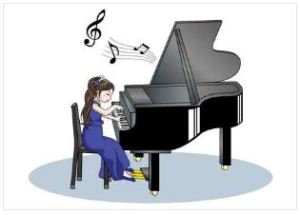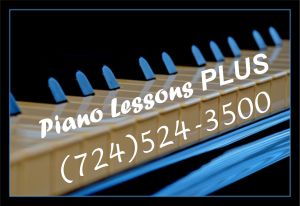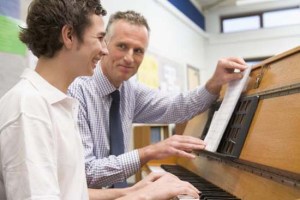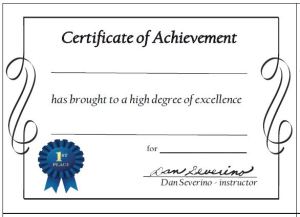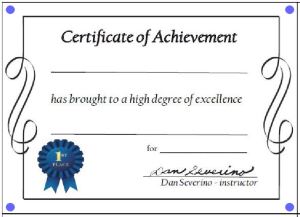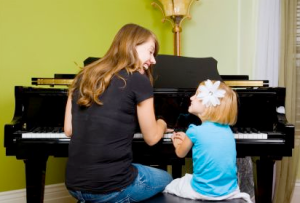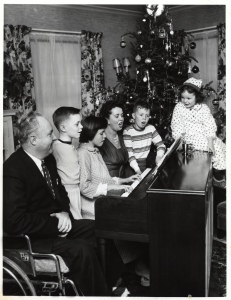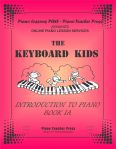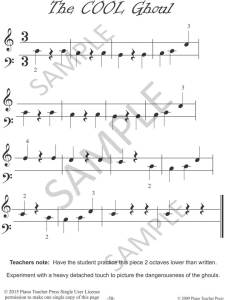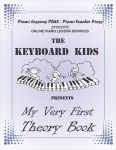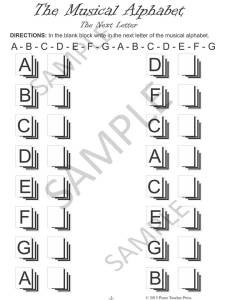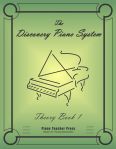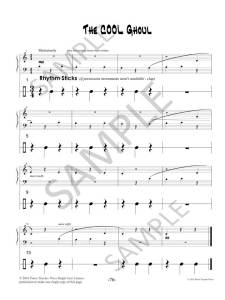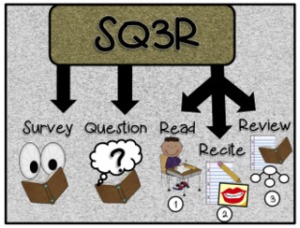 In high school I had a friend who became his schools valedictorian. We were both members of a speech club patterned after Toastmaster’s International. One meeting Rich was scheduled to give a speech. I remember it to this day. It was on the subject of How to Learn Effectively. Rich didn’t create this method but he used it with obvious success.
In high school I had a friend who became his schools valedictorian. We were both members of a speech club patterned after Toastmaster’s International. One meeting Rich was scheduled to give a speech. I remember it to this day. It was on the subject of How to Learn Effectively. Rich didn’t create this method but he used it with obvious success.
The method is SQ3R or Survey/Question/Read/Recite/Review. I think this method can be adapted to be a superb plan for helping our students learn their repertoire assignments. In adapting the method for music study I slightly altered the sequence by switching the last two “R” items making it Survey/Question/Read/Review/Recite. SQ3R is a method guaranteed to improve learning and comprehension in our student’s music study.
I think most students just lunge into their assignment and begin slugging through their new pieces through sight reading. Another slightly more disciplined approach many students use is to first learn hands separately. But, can this method for learning new assignments be improved upon? I say YES!! According to SQ3R jumping into immediately reading the piece is a mistake. According to SQ3R “reading” is the third step of the five step plan. Let’s review this plan and apply it to learning a musical composition.
The Overview
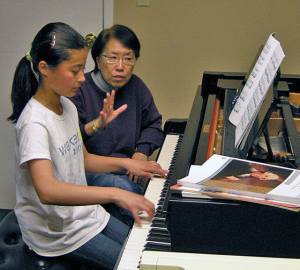 SQ 3R or SQRRR stands for Survey – Question – Read – Review – Recite.
SQ 3R or SQRRR stands for Survey – Question – Read – Review – Recite.
SURVEY – Survey the piece for new symbols, words, dynamics, phrases, touches, repeats, fingering, possible trouble spots
QUESTION – As much as you can, study the piece and take in as much as you can without playing the piece through. Mentally imagine playing isolated passages, for example. And, after mentally playing through the passage, physically play through the passage. If the piece contains thumb turns mentally imagine playing those thumb turns. Make plans as to how to go about learning the trouble spots and then execute that plan by physically playing through it.
READ – Read through the piece but first determine which parts you’re going to play hands separately and which parts you’re going to play hands together. ANOTHER R to associate with reading is REPEAT. REPEAT this step until you can play through the piece steadily and musically.
REVIEW – Once you can play through the piece steadily and musically; to bring this piece to the next level (if you so desire) begin memorizing the piece. ANOTHER R to associate with review is RECALL.
RECITE – After the piece is well “in your fingers” and, for the most part memorized, we can take this piece to an even higher level and make it RECITAL READY. ANOTHER R to associate with recite (for my students) is RECORD. I ask my students to record their favorite compositions as part of their lessons.
I think by students not giving due attention to the first two steps (Survey and Question) they make the third step (Read) much more difficult than it need be. I think if students will get in the habit of properly surveying and asking questions about their pieces, BEFORE taking their fingers to the keys and reading the piece for the first time, a goodly part of the reading issues will already he partially accomplished. This is one of the major reasons I think SQ3R is superior to having students jump into reading the piece cold, without proper preparation. Jumping into reading pieces immediately without due preparation is one of the reasons I think our students may get frustrated with the learning process in taking on their new compositions.
More Detail – SURVEY
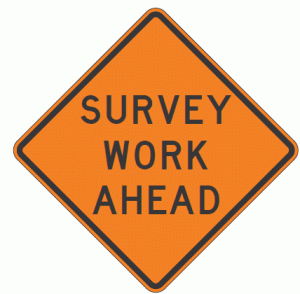 In applying SQ3R to music study, I’m saying SURVEY would include those areas of a music composition would include all those items that can be learned through a quick glancing over the music. I think it is important for the teacher to teach the student “how to survey” a piece of music.
In applying SQ3R to music study, I’m saying SURVEY would include those areas of a music composition would include all those items that can be learned through a quick glancing over the music. I think it is important for the teacher to teach the student “how to survey” a piece of music.
If a composition has a repeat mark, point to the repeat mark and ask the student, “Where do we begin this repeat?”
Is the student familiar with all of the musical terms found in the composition. The teach should define the terms.
Also include looking at the title of the composition! If the piece is called Scherzo does the student understand the term and how that would effect the nature of his performance. The teacher should inform the student so they have a basic understanding of the term.
Finally, at the SURVEY level the student should spot those areas that may provide technical or reading challenges. If a student has little experience playing left hand eighth note patterns taking note of that passage would be in order. If there are some very low bass tones the student has never played take note of them. All this preliminary work help orient the student to the task at hand in learning this new composition.
To repeat, I think it’s very important for the teacher to impress on the student the necessity to SURVEY their composition before playing a note. This is counter to the impulse to get ones fingers running through the notes of a new piece as soon as possible.
Also, at the beginning stages of learning students are carte blanche and need to develop the skill of learning how to SURVEY a piece of music. It should be a part of the piano lesson for the first several years of piano study while the student gradually can do this independently from the teacher. I would also recommend giving students a SURVEY ASSIGNMENT occasionally to check their growing ability of learning how to SURVEY their compositions.
More Detail – QUESTION
 This step of SQ3R is where the student asks many QUESTIONS as to how to go about playing the piece. This requires both mental work and physically work in playing through those isolated trouble spots one found in the SURVEY stage.
This step of SQ3R is where the student asks many QUESTIONS as to how to go about playing the piece. This requires both mental work and physically work in playing through those isolated trouble spots one found in the SURVEY stage.
This stage is where the student takes the information gleaned from the SURVEY stage and gives it physical application. If we take our example of learning our first Scherzo the student should give some mental thought and ask QUESTIONS as to how to create an image of playing a piece with good humor.
If the piece has some trouble spots we can isolate those passages, perhaps decide on a good fingering (mental work), and then get a start of learning that passage (physical work). If one goes through this QUESTIONING method through each tricky passage of a composition one will be in a much better position when one finally gets to the point of playing through the complete composition.
As an example. I recently started a new transfer student with only 4 months of previous lessons. She wasn’t poorly taught but she was struggling with her note reading, as do many beginning students. She already knew several scales and was beginning to learn about chords. There was a lot of good teaching that I could build upon. One of the first things I taught this student was “reading in steps”. I taught her the concept of steps; notes moving from line to space. THEN I would take a piece from her book and highlight all the step passages in yellow. A good 85% of this particular piece was steps. I asked the student a QUESTION. “How much of this piece is made of steps?”. The student quickly observed through my SURVEYING of the music for her that almost the complete piece was made of steps. When the student saw that 85% of her piece was just stepping to the next note she immediately was able to play the piece with greater steadiness and security. This is SURVEY and QUESTION at work!
Another example with the same student. We were learning a very simple arrangement of This Land is Your Land. This little arrangement had two repetitions of the main theme. The second repetition had accompanying notes for the left hand. We didn’t have a lot of experience with this type of simple harmonization so before playing a note I pointed out that this would be a “trouble spot” and something we have not experienced up to this point. After seeing the problem we isolated those measures and I asked the students questions regarding the notes and we found the notes followed a pattern containing steps and skips. We found this pattern happened twice, in fact. We highlighted the left hand pattern and played it through a couple times until we had a basic understanding of the movement of the notes. I repeated to the student the movement of the notes; a step here and a skip there. I mentioned to the student when we play this hands together you have to remember the movement of the notes. THEN we tried playing hands together. She was able to get through the passage fairly well. This is SURVEY and QUESTION at work! It’s a frustration saver.
But again, I repeat. At the beginning of lessons it will be largely the teacher’s job to help the student through these initial two steps of SQ3R. In time the students will slowly, as they gain experience and knowledge, be able to take more and more responsibility themselves.
If we immediately hop to the READING step of SQ3r without these very important preliminary steps of SURVEY and QUESTION students will most likely be slugging their way through their new pieces and leading themselves into frustration. And, in my experience frustration is one of the leading causes of potentially good students dropping their music studies. The frustration eventually reaches “critical mass” and piano lessons just don’t become worth the effort. SQ3R is a method that can ameliorate that constant frustration in learning new music; especially through its preliminary steps of SURVEY and QUESTION.
More Details – READ
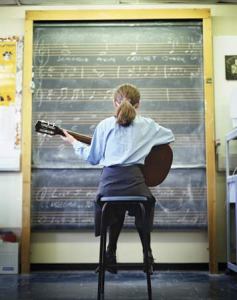 If SURVEY and QUESTION is done thoroughly the READ step will come much more easily. To save the length of this article I will not address tips on helping students with techniques to help them read music.
If SURVEY and QUESTION is done thoroughly the READ step will come much more easily. To save the length of this article I will not address tips on helping students with techniques to help them read music.
BUT ….. I would like to add ANOTHER R word to accompany READ. That is REPEAT. There will always be a need for repetition for one to gain fluency and facility. I think what we want to strive for is repetition that is meaningful and not meaningless. One error is the mistake of playing a piece from beginning to end. It is much more productive to work on more bite size units; a phrase and/or a unit (e.g. Theme One of a sonatina), than a complete composition.
Also, repeating should also have an end in mind. To repeat a passage until a crescendo is mastered. To repeat a passage until the voicing is executed clearly. To repeat a passage until the tone quality is what your ear tells you is proper.
The ability to teach students to read well cannot be underestimated. I would much rather have my students read well than labor over a couple compositions that gain them a superior rating at a music festival. I would much rather have my students play 20 pieces nicely than 2 pieces artistically. Of course, the ultimate goal is to have my students play 20 pieces nicely AND two pieces artistically. BUT ….. it’s the ability to read music readily that going to be the lasting skill that will keep a student in music for a lifetime; and, for me, reading well gets the priority.
More Detail – Review
 Applying SQ3R in the REVIEW step in academic work occurs after one reads the material and then goes over that same material again. This second going over the details is to cement them into ones memory. It is to maybe see if there is a macro theme to be found in this more refined reading stage of the SQ3R plan.
Applying SQ3R in the REVIEW step in academic work occurs after one reads the material and then goes over that same material again. This second going over the details is to cement them into ones memory. It is to maybe see if there is a macro theme to be found in this more refined reading stage of the SQ3R plan.
Applying this to music study I again add ANOTHER R to accompany REVIEW. That word is RECALL. One of my first teachers once told me that a musician doesn’t carry around his music in a bushel basket when he’s asked to perform. My teacher had me buy a composition book and I had to alphabetize several pages for each letter of the alphabet. I was to memorize my music and list these pieces alphabetically in my composition book. After putting my memory pieces in my composition book I was to be able to play any piece listed instantly from memory. It was a great discipline.
Unfortunately for me, this teacher quit teaching and my succeeding teachers didn’t continue this particular discipline. But, developing our students memory skill, or their ability to RECALL, is important; especially to those students that are gifted with good memories.
Developing memory skills and giving students incentives to memorize pieces and/or develop repertoire lists is beyond the scope of this blog but memory, the ability to RECALL, is a discipline that can only benefit a music student.
More Detail – RECITE
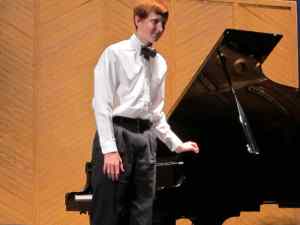 Our final step in our SQ3R plan is RECITE. In academic work after one READS an assignment and then REVIEWS the material so he can recall the significant points of the assigned reading; the student is asked to RECITE the assigned material and put it in his own words.
Our final step in our SQ3R plan is RECITE. In academic work after one READS an assignment and then REVIEWS the material so he can recall the significant points of the assigned reading; the student is asked to RECITE the assigned material and put it in his own words.
Here the students gets to the last point of academic mastery by “owning the material“; having absorbed the contents to the point of being able to, in his own words, RECITE the material. This is learning of the highest order. It is beyond just “recalling” the points of the assignment.
Some educators derisively call this “parroting”. This goes to a higher level of learning that demonstrates full mastery of the material where the facts and details are totally absorbed into the student’s person.
Translating RECITE into music study I again give an ADDITIONAL R word. That word is RECITAL. After a student has SURVEYED his assignment and have asked good and insightful QUESTIONS about the assignment. After the student has READ and reread the composition repeatedly. After the student has thoroughly mastered the reading of the composition and REVIEWS it recalling its details from memory, his work still isn’t fully completed until he goes one more level. He must now play (RECITE) the composition in recital. The greatest level of mastery is to play in recital (for an audience); having thoroughly prepared through SURVEY-QUESTION-READ-REVIEW and finally RECITE.
My friend, Rich, who taught me SQ3R became his high schools valedictorian. This was his method of study. He became a successful lawyer. I think if we apply SQ3R in our piano teaching (or creatively adapting its principles in our teaching) we will be “upping our game” in our studios and producing more masterful young pianists.
Survey/Question/Read/Review/Recite
Read Full Post »

